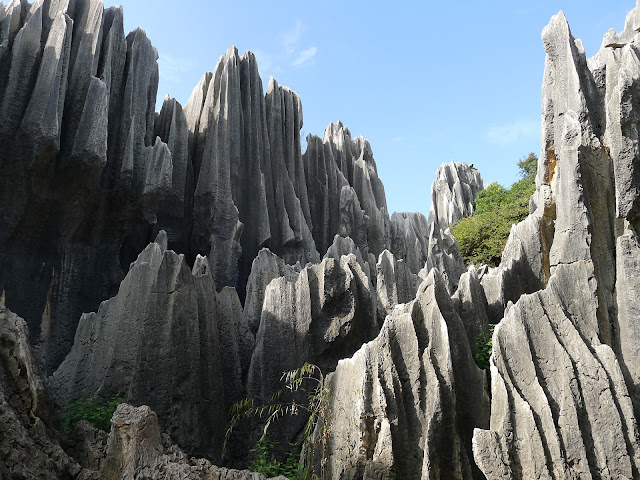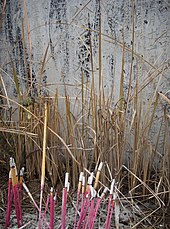 For a change, we will start this week with something interesting: a startling image from a faraway place like, well, the Yunnan province in southern China. Yunnan is the most southwestern of the provinces and features some of China's most spectacular scenery, including the famous Leaping Tiger Gorge. The intrepid YRC staff were there on business. In a bizarre twist of events, on this trip, the slacker contingent in on the staff was working and the working contingent was...well, slacking. But it was there that we learned the ways of the Chinese Tour Group, which we will share with you in this week's missive.
For a change, we will start this week with something interesting: a startling image from a faraway place like, well, the Yunnan province in southern China. Yunnan is the most southwestern of the provinces and features some of China's most spectacular scenery, including the famous Leaping Tiger Gorge. The intrepid YRC staff were there on business. In a bizarre twist of events, on this trip, the slacker contingent in on the staff was working and the working contingent was...well, slacking. But it was there that we learned the ways of the Chinese Tour Group, which we will share with you in this week's missive. |
| Karst, Schmarst in Yunnan |
Wikipedia on Yunnan Tourism: Yunnan Province, due to its beautiful landscapes, mild climate and colorful ethnic minorities, is one of China's major tourist destinations. Most visitors are Chinese tourists, although trips to Yunnan are organized by an increasing number of foreign travel agencies as well. Mainland tourists travel by the masses; 2.75 million Chinese visited Yunnan last October during National Holiday.
 |
| Photo Opportunity! |
And they do it in buses, in tour groups, with the same colored hats.
The group is lead by a tour leader who indicates leadership by carrying a brightly colored flag or umbrella for recognition and a megaphone to communicate.
 |
| Please stay on the trails... |
 |
Why the guide? Because you don't just wander
around in a park, people. There are things to see, moments to experience and of course, photos to be taken. And these are done in a sequence, from point A to point B to point C and then back to the bus for drinks and snacks and a chance to show each other the pictures that were just taken.
The YRC staff had an excellent opportunity to see The People's Tourism first hand in Kunming at two of the People's Wonders of Nature parks. The first was the Shilin Stone Forest (Shilin (Chinese: 石林; pinyin: Shílín). The park contains "a notable set of basalt formations located in Shilin Yi Autonomous County." According to the guide book, "The tall rocks seem to emanate from the ground in the manner of stalagmites, with many looking like petrified trees thereby creating the illusion of a forest made of stone."
What we discovered was, if you are solo travelers on "the route" through the park, you are in danger of joining the forest made of stone. Large tours rocket along the trail at precise 3-minute intervals, going the same direction in the same sequence to stop at the same points to hear the brief explanation of "Elephant Rock" and then snap the required picture at the well signed and marked "photo point". As the YRC staff attempted to "wander" the park, we were nearly trampled and crushed by the advancing tour groups. We were very out of sequence and very in the way. Then, we learned the rhythm and could get around safely. It works like this: When you hear an advancing megaphone, dive for cover. Look like a tree. Avoid eye contact or sudden movement. Camouflage is the sniper's and the lauwai tourist's friend. Stay still. As the crowd moves on, dart into the gap between the groups. Keep moving and never, never, go against the flow. There is no turning back in the Park, comrades...
 |
| Cool and Comfortable |
When in rainy season, it seems like a sensational giant dragon under moist vapor like to kiss you cool and comfortable.
 |
| No Turning Back! |
 |
| Nature is Better with Neon |
After our training in the Stone Forests we felt we could confidently handle our second
Chinese Nature Tour. But we were overconfident. We had forgotten the famous Second Law of Travel in the Peoples Republic:
"You Do Not Find the FUBAR. It Finds You!"
The trail was...in a cave. There was no place to duck in and out of traffic. There was no place to hide. We advanced through a glowing series of caves on a pathway like a set of rails through an underground Las Vegas. Your YRC staff were like a pair of small rabid squirrels caught between packs of eagerly advancing Panda bears. Megaphones to the front of us, megaphones behind us, we could only keep moving forward.
The trail went down, down, down, down, into the depths of Chinese Underground Neon Land. We descended deep into the caves in a series of steep inclines and drops through ravines. At the bottom, there was a rest stop and dozens of tour groups resting for the next big push.
It can be said that only in China would they find a way to get hundreds of Chinese senior citizens to the bottom of a cave and have no way to get them out. Yes, fellow travelers, we had reached the end of the descent. The wonders of the Fairy Palace were behind us and before us was...The Long Leap Upward.
 |
| The Great Leap Upward |
 |
| Return to the Surface |
A senior couple who had been keeping pace with us for the last few hundred yards commented to us that those who rented the chairs and took the easy was out were probably "from Shanghai and thought they were better than the rest of us." Indeed, we nodded sadly, those lazy wretches from Shanghai...






